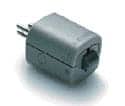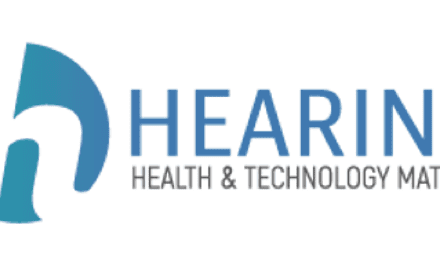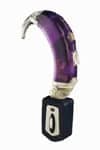Looking into the future with Siemens’ chief research officer.

Recently, Hearing Products Report (HPR) had the opportunity to chat with Thomas A. Powers, PhD, chief research officer for Siemens Hearing Instruments Inc. Powers provided some insight into the company’s hearing health care division.
Please provide some background on Siemens.
Thomas A. Powers, PhD Siemens has been helping individuals with hearing loss for over 125 years. In 1878, Werner von Siemens developed a special telephone receiver for individuals with hearing loss, called a phonophor. This single invention paved the way for over 12 decades of advancement in the field of audiology. And today we continue to push the innovation envelope with new products such as iScan™, the first in-office ear impression scanner designed exclusively for use by hearing care professionals, and ACURIS Life, an “open” ear hearing instrument with e2e wireless™ (ear-to-ear) technology.
When and where was Siemens established?
Powers We have been in our current headquarters since 1989. Prior to that, we manufactured our hearing instruments from a Siemens Medical Solutions facility located in Union, NJ.
Who are the primary decision-makers in the hearing division?
Powers In developing hearing instrument technologies, we do not rely on just one group of primary decision-makers. Actually, our ideas stem from many different groups. We feel this is a better approach to product development as it brings together many different disciplines from around the world. Siemens engineers, audiologists, and product managers make up our global technology group. Plus, we work closely with universities, hospitals, and hearing centers. This internal and external collaboration provides the drive for our innovative technologies.

Where is the company’s present headquarters?
Powers Our US headquarters is in Piscataway, NJ.
How long have you been with the company?
Powers I have been with Siemens almost 24 years. I joined the company in 1981 after spending a few years working in private practice.
How has your role in the company evolved and what are your primary responsibilities as chief research officer for Siemens Hearing Instruments Inc?
Powers Over the years I have focused on different areas including sales, marketing, and product development. Currently, I am responsible for overseeing the audiologic aspects of product development, exploring the newest technologies on the market. I manage the clinical trials and testing of new products in the United States, ensuring the effectiveness of the digital signal processing (DSP) algorithms for individuals with hearing loss.
ACURIS Life was introduced at AAA. There are really three components that we should address. The first is the wireless technology available in all ACURIS models. This is called e2e (ear-to-ear) wireless, and it allows two independent hearing instruments to function as one hearing system. The technology synchronizes the system’s core advanced digital signal processing and wearer-operated controls. The second component is the “open ear” technology. To eliminate the occlusion effect that some individuals with hearing loss experience, we developed ACURIS Life. Designed without a conventional earhook, ACURIS Life instead utilizes a small adapter connected to an extremely thin tube, called LifeTube. The LifeTube is then connected to a nonoccluding tip, called a LifeTip, which is placed in the ear canal. These components allow the fitting to remain open and comfortable, as well as minimize the occurrence of the occlusion effect. The last component is the advanced High Speed Feedback Cancellation. Open fittings are more prone to feedback so having an advanced method to eliminate feedback is critical to its success. All ACURIS and ACURIS Life models utilize an advanced adaptive phase cancellation system that doesn’t require a special initialization procedure. It also recognizes music as music (not feedback) and optimizes the setting accordingly.
Will the product be distributed both domestically and internationally?
Powers Yes, our products are available all over the world, with each market tailoring the product offerings to match their local market requirements.
When was this technology developed? Who was the innovator?
Powers Our global group worked on the development of our wireless technology for about 3 years. With regard to the “open ear” instrument technology, we already had the ACURIS and wireless development path under way when the open product “ACURIS Life” was incorporated. It is a very logical pairing of technologies.
How is Siemens positioning ACURIS in the marketplace?
Powers In addition to its wireless capability, the basic core technology available in ACURIS is more advanced than any previous technology. The five components found in the core technology, its multichannel audiometric and dynamic range compensation, digital speech and noise management, high-speed digital feedback cancellation, multidimensional directional optimization, and precision environmental classification, really position this product as the most advanced and sophisticated digital solution available. And while the e2e wireless communication provides additional patient benefits, the advanced signal processing capabilities of ACURIS allow it to be fit monaurally or binaurally.
Describe the target market—eg, age group, gender, and geographic location?
Powers Because hearing loss is so universal, we focus on developing comprehensive product lines that meet all demands and expectations. With the addition of ACURIS Life, the ACURIS family now offers even more solutions for any age group and any type of hearing loss. Plus, the different colors and models available fulfill most cosmetic preferences.
What other technologies does R&D have on the table to follow the success of ACURIS?
Powers Because we aren’t able to give too much away, let’s just say that we are always working on technologies that address specific consumer needs. Siemens is always striving to shape the next generation of DSP algorithms.
What demographic does the company intend to reach?
Powers Our goal is to develop products that can be optimized for all individuals with hearing loss. But with the introduction of ACURIS Life, we are reaching out more to individuals with mild-to-moderate hearing loss, who are just beginning to realize they have a problem and are seeking a cosmetically appealing, one-visit solution.
What new products are on the horizon in the next 12 months?
Powers As time management becomes a bigger issue for professionals, an area of focus for us has been electronic ordering and online business services. Having the ability to order products anytime allows the professional to spend more time with clients. They can complete the ordering process when it is convenient for them—without the concern of a courier or pickup service’s deadline. When we started LasR manufacturing and mySiemens e–ordering over 4 years ago, we said the next step would be scanning impressions in the professional’s office. At AAA, we premiered iScan, an in-office scanning system. With iScan, professionals will be able to take advantage of digital scanning’s known benefits to obtain an overall more accurate and efficient hearing instrument fitting process.
How do you see Siemens’ role in the hearing health care arena over the next decade?
Powers Our success depends on the success of our customers. We intend to continue providing them with products and services that help them achieve their goal of providing high-quality, technically advanced products for their patients.
— Rogena Schuyler Silverman





